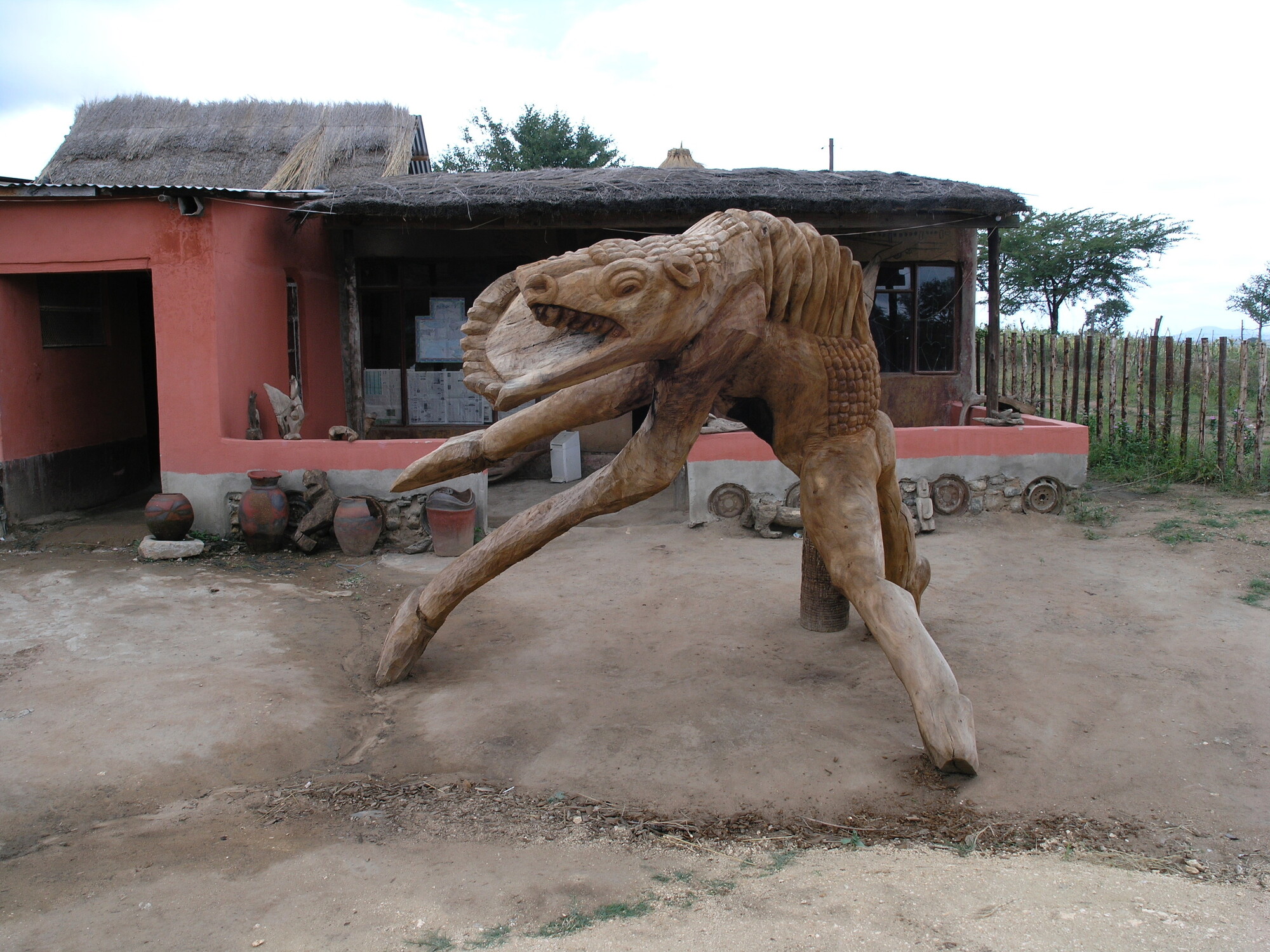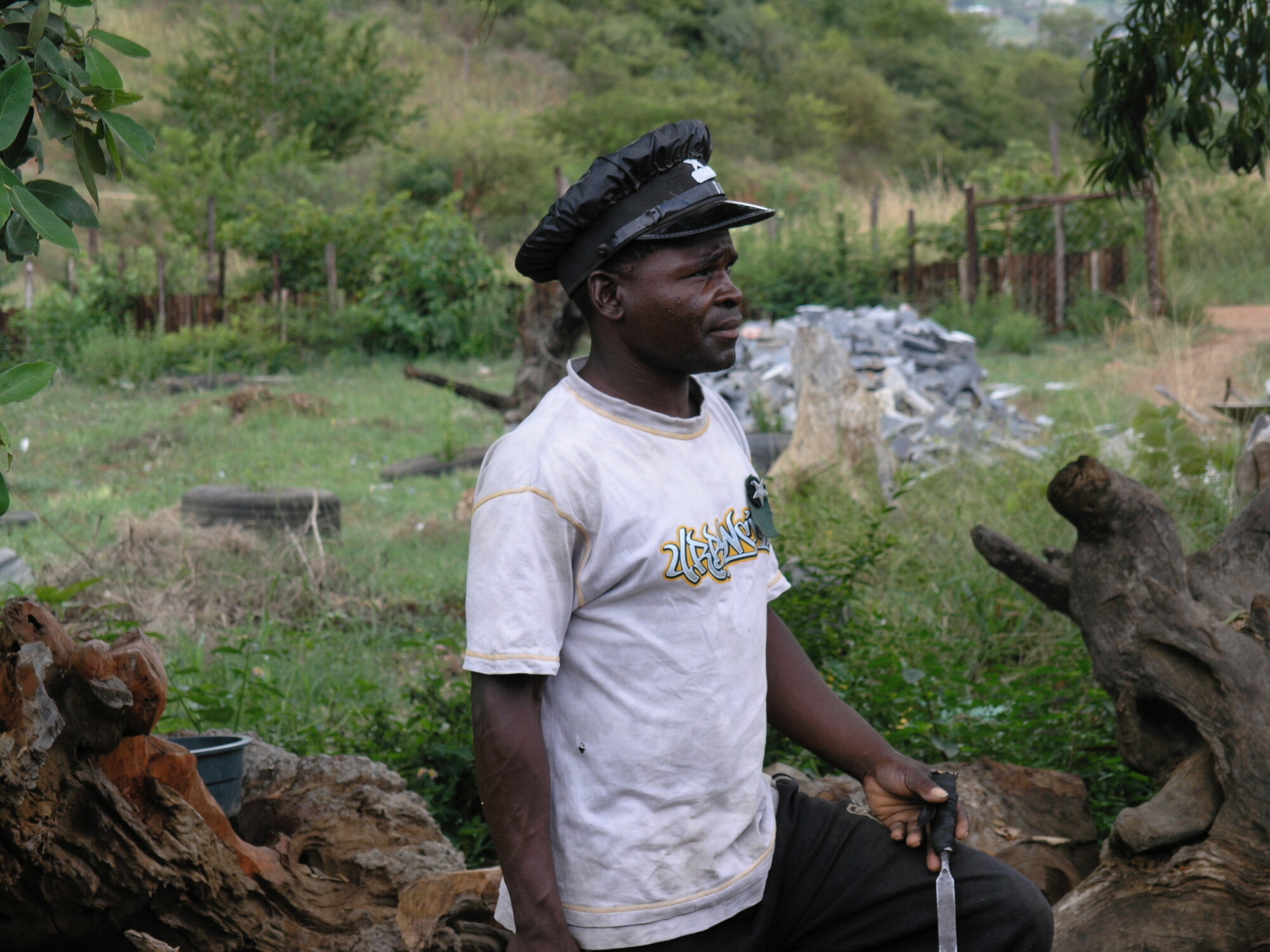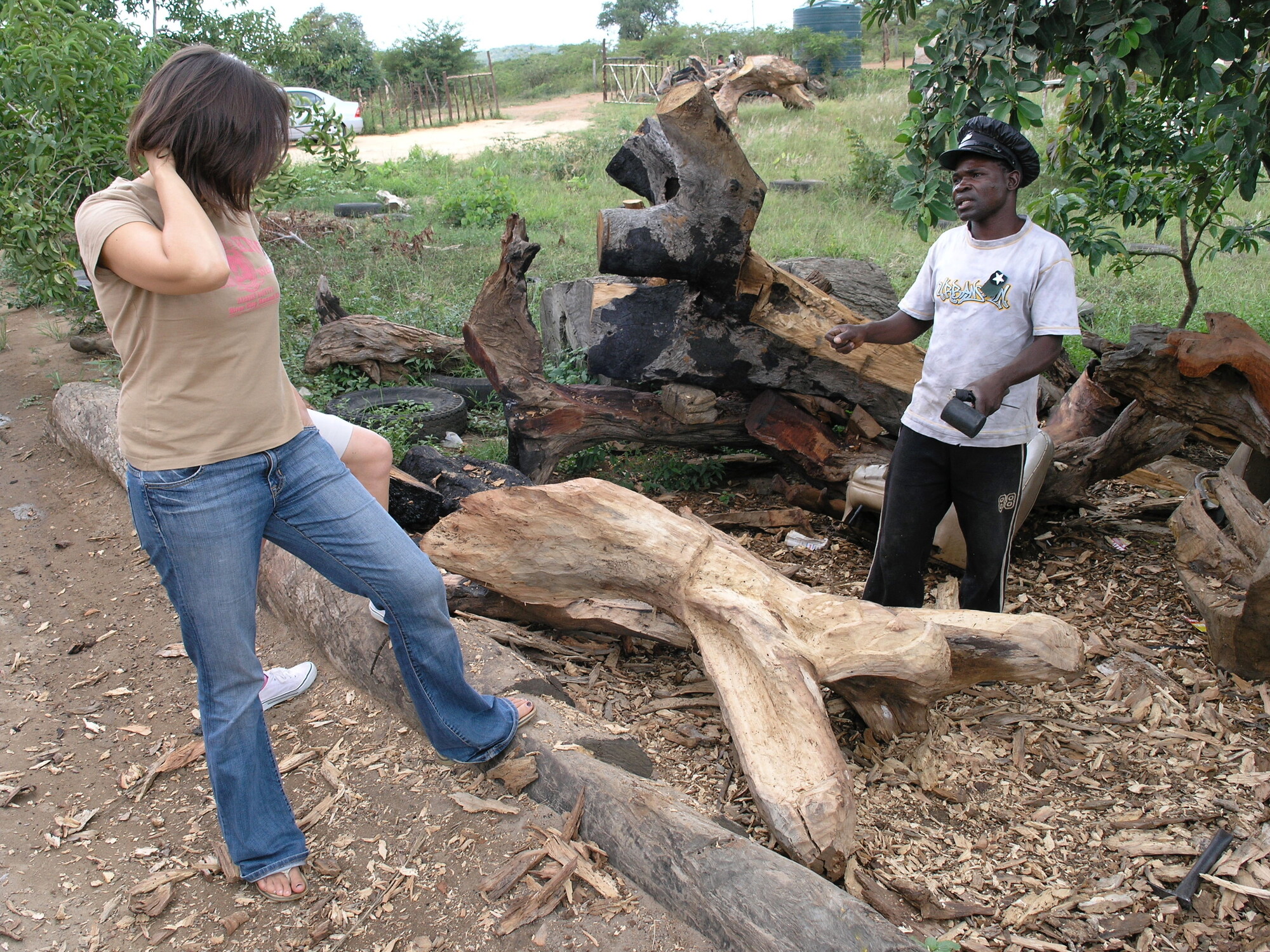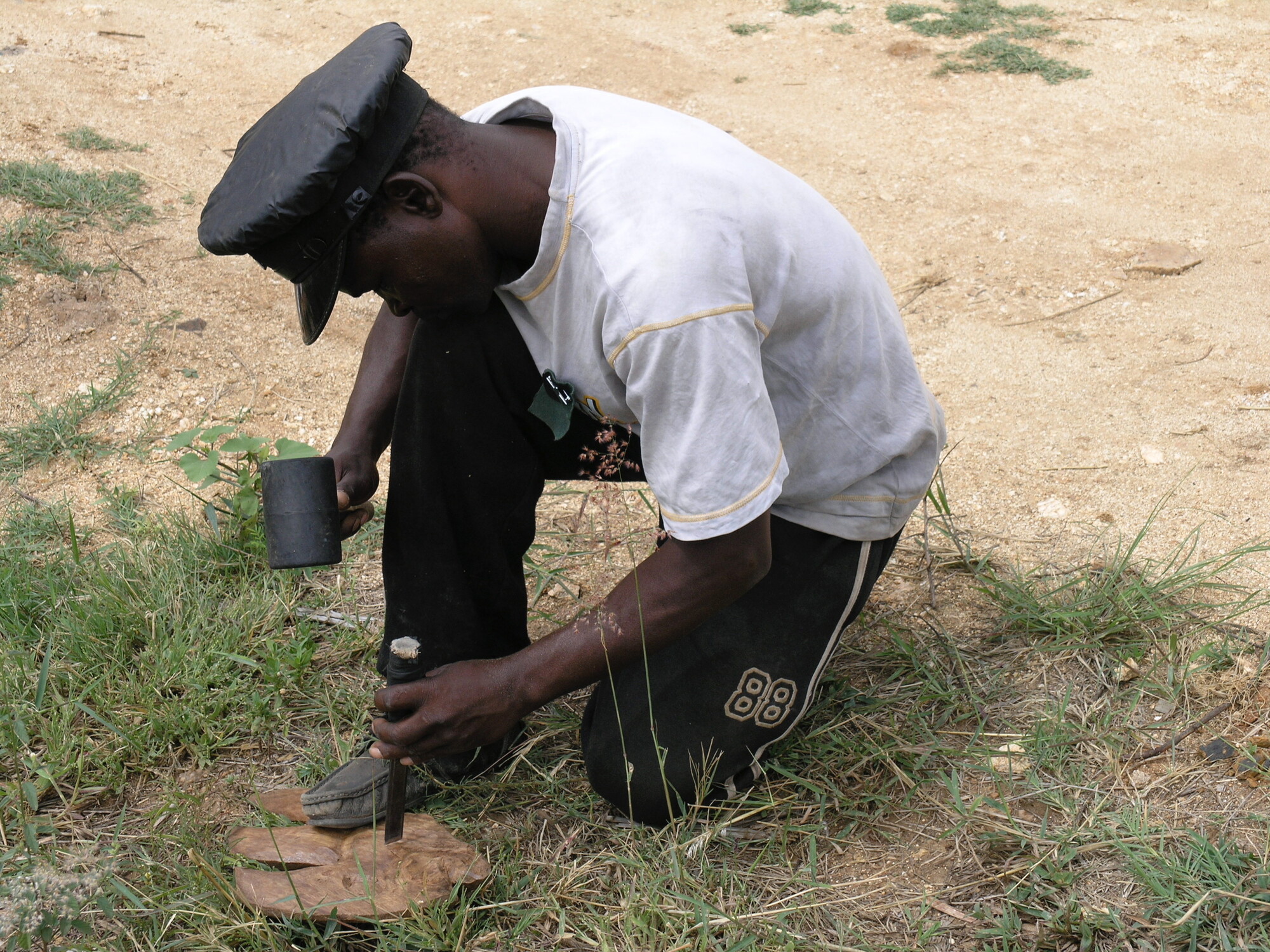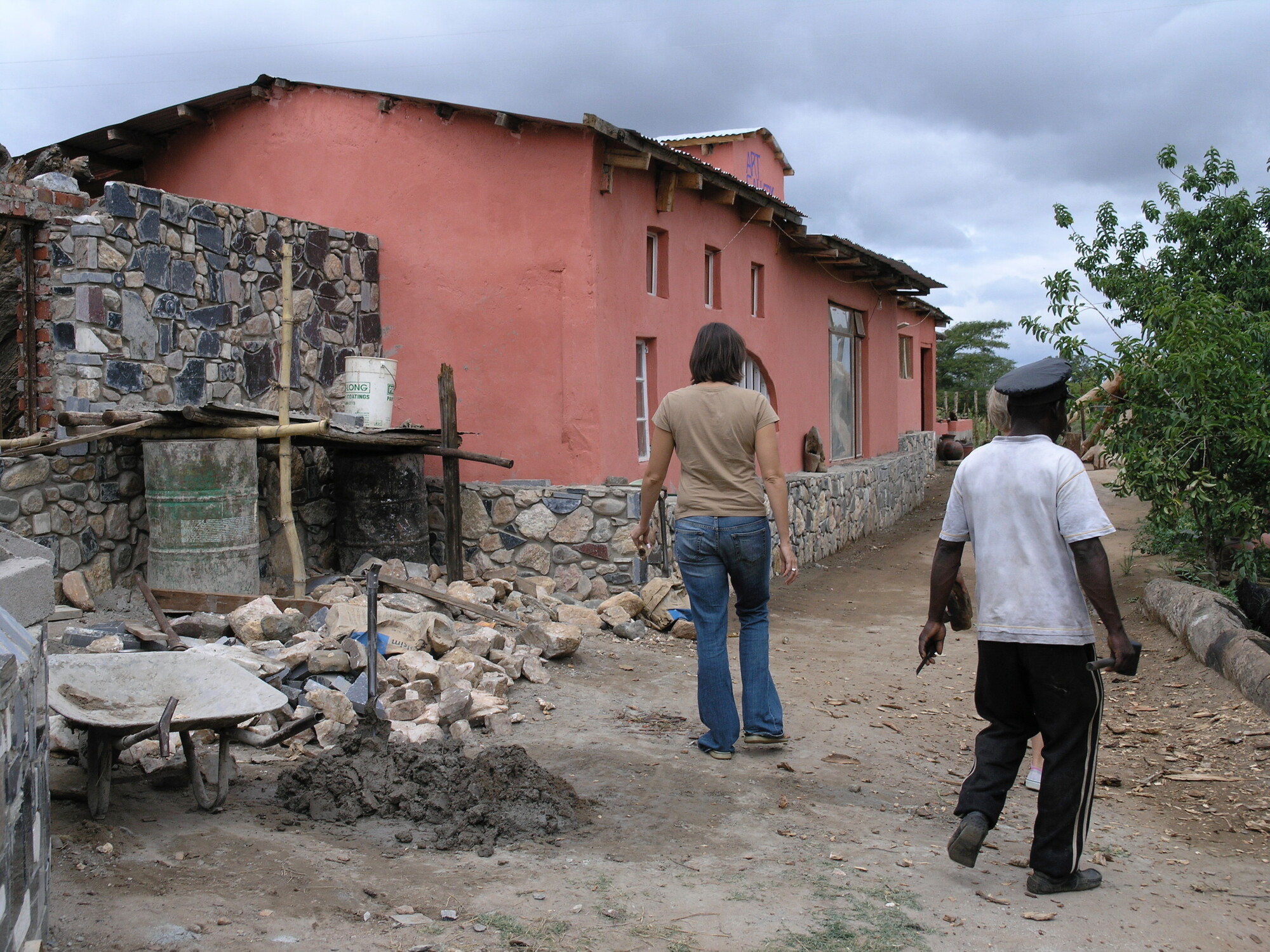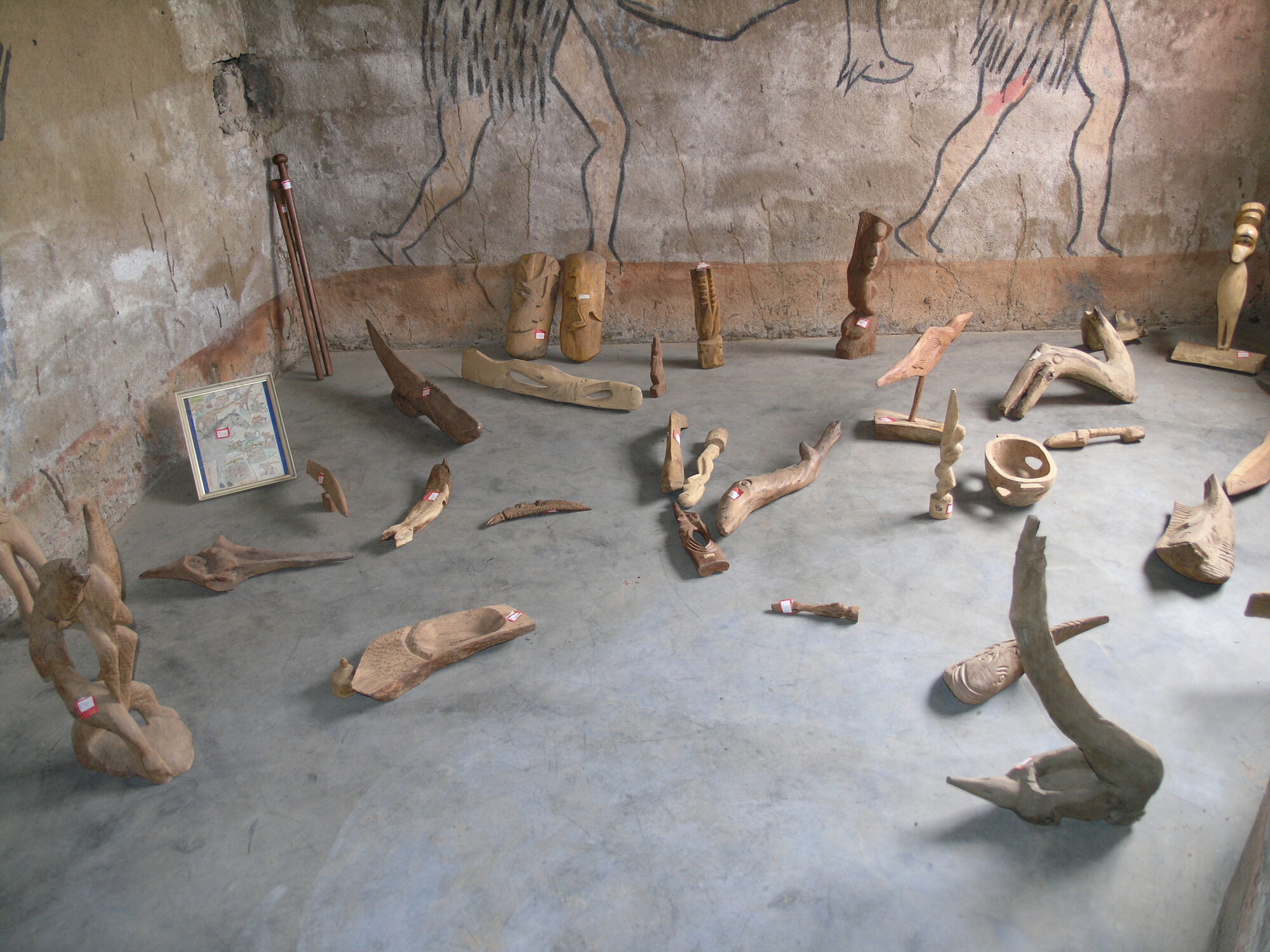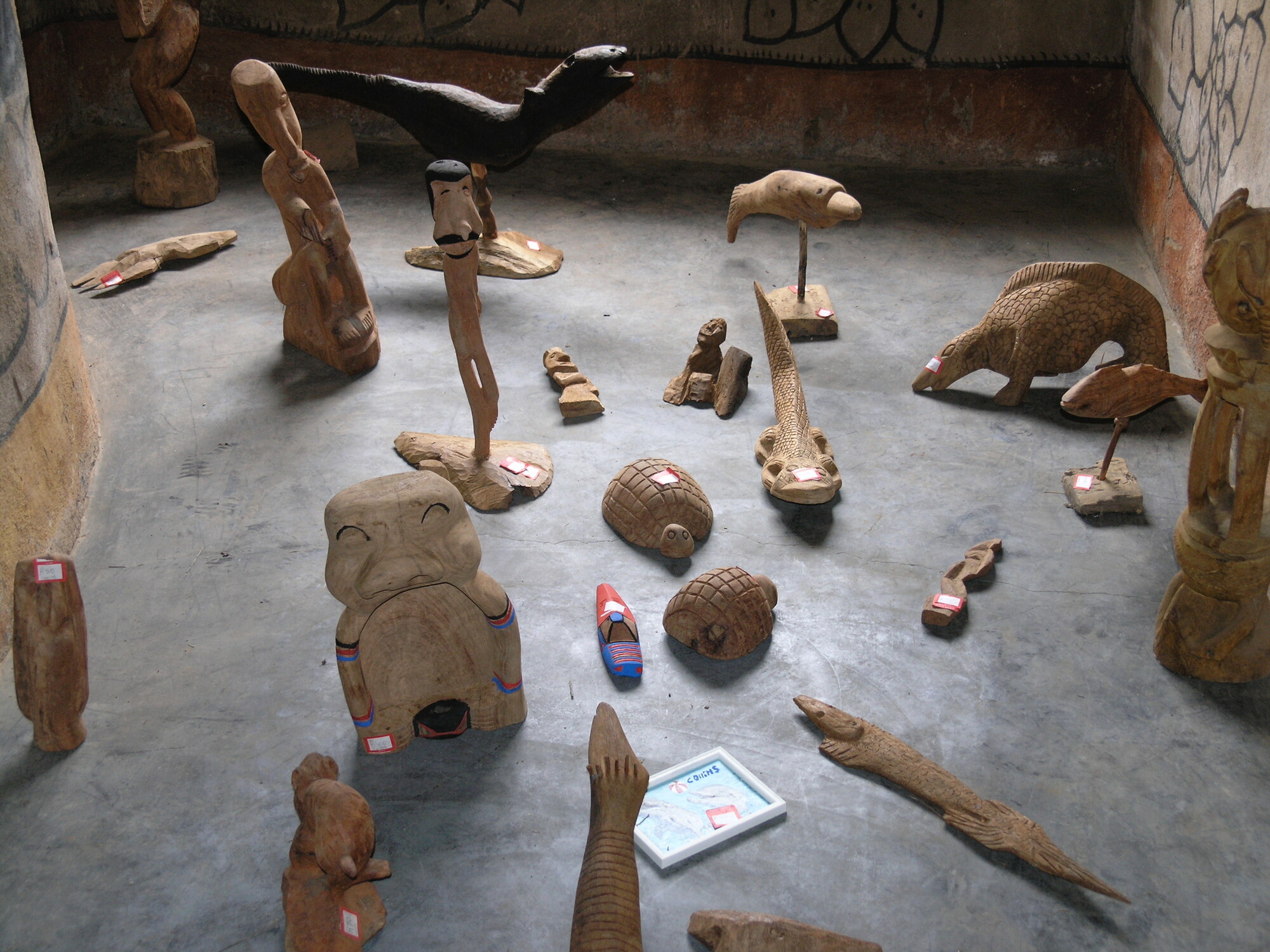Godzilla
| CCAC #: | 0019 |
| Artwork title: | Godzilla |
| Artist(s): |
John Baloyi |
| Year made: | 2004 |
| Artwork type: | Sculpture or object |
| Medium: | Wood |
| Dimensions (mm): | 3100 x 2370 x 2410 |
| Source: | Acquired by the Artworks Committee |
| Year acquired: | 2006 |
| Installation type: | Movable artwork |
| Current location: | On public display |
| Signage: | Inspiration for this sculpture struck when John Baloyi had come across a huge tree that was uprooted by flooding of the Limpopo River and trapped between rocks downstream. The artist envisaged Godzilla emerging from the violence of the water, and carved it in one piece, from the roots and trunk. The monstrous yet strangely endearing sculpture, based on the Japanese legend and movie by the same name, depicts the angry giant with his tail cut off in an attempt to curb destruction. John Baloyi was a protégé of the famous wood sculptor Jackson Hlungwani, with Venda artist Baloyi later becoming a highly accomplished sculptor. After having worked in the mines and having operated a delivery business, Baloyi decided to focus full time on his career as an artist and teacher. On the 28th of May 2004, Baloyi realised his dream of over a decade to open his gallery - the Mashamba Art Gallery and Museum in Elim, rural Limpopo. Justice Albie Sachs was asked by Baloyi to be the guest speaker at the Gallery’s official opening. It was at this event that Sachs saw and acquired Godzilla for donation to the Constitutional Court Trust. This all had come about after Sachs saw another of Baloyi’s sculptures - Ghost - which had previously been donated to form part of the CCAC. Baloyi himself delivered the magnificent leadwood sculpture to the foot of the court's Great African Steps. He travelled over 500km with the approximately 3m high giant balancing on the back of his truck. The artist was quoted as saying "I am very happy that the court has taken this piece. In a way, it still belongs to me, as it is a part of a government building for everybody to come and see." The artwork’s initial outside placement was a strategic one, with the artwork serving as one of the three sentinels of the court, guarding but also bringing an aesthetic energy to the various entry points to the Constitutional Court. Dumile Feni’s History and Orlando de Almeida Moving into Dance similarly serve the function of greeting visitors at the three corners of the court building, indicating that the court is filled with artworks by artists and crafters from all parts of the country. Not long after the work found a home at the Constitutional Court, and just as Baloyi's fame was beginning to equal to that of Hlungwani, he died tragically in a car accident. Many years later, at the beginning of 2019, the sculpture toppled due to prolonged exposure to environmental elements. The sculpture, with its leg broken off, was moved inside and ways were sought to restore Godzilla to its former glory. The findings were unanimous: the sculpture could not stand again as the wood had become too soft. Another way the once mighty, but now fallen Godzilla could be exhibited needed to be devised, as is its current installation. Godzilla's fall created another branch to the story of this artwork, the defiant creature having finally been tamed, but it also serves as a cautionary tale. It speaks of the importance of implementing due care to ensure the preservation of artworks for future generations. |

Photographer: Ben Law-Viljoen
Photo copyright: CCT
NOTE: The process of photographing artworks in the CCAC is underway - we are currently working to improve image quality and display on the CMS but have included internal reference photos for identification purposes in the interim.
